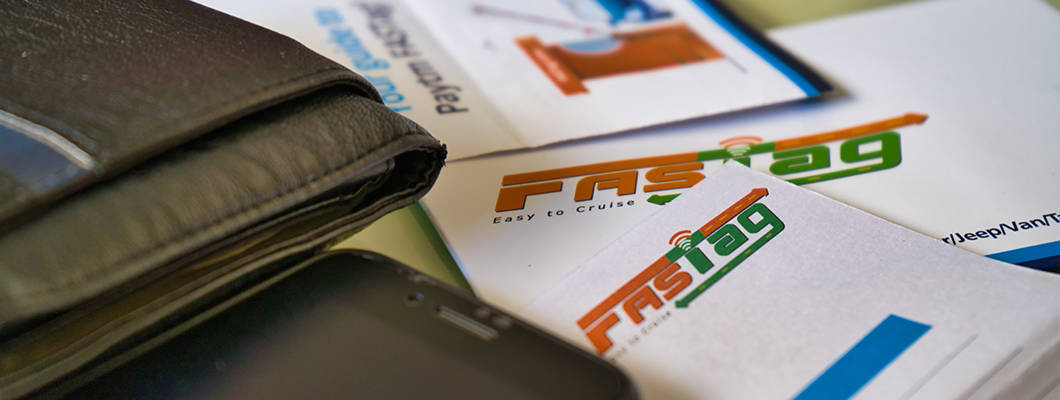
What is a FASTag Scanner and How Does It Work?
Posted on Tuesday, July 4th, 2023 | By IndusInd Bank
FASTag scanners are electronic devices installed at tool booths. Using Radio Frequency Identification (RFID) technology, they communicate with FASTag stickers, facilitating quick electronic toll collections as the toll amount is automatically deducted from the linked bank account or wallet. Through automated contactless payments, these scanners reduce traffic congestion at toll booths and save time.
Ever since FASTags were mandated in 2021 for vehicles driving through national highways, this humble tag has become ubiquitous in usage. Users simply need to link a mobile wallet or a bank account to their FASTag, and the applicable amount is automatically deducted from the linked account. Implemented by the Indian government to avoid congestion and long queues at national highways throughout the country, this cashless payment model facilitates electronic toll collection with ease.
Working in unison as part of this well-ordered system is a device called the FASTag scanner. The scanner may seem simple, but its functionality is far from ordinary. It is due to this scanner that the cashless system works smoothly at toll plazas, eliminating the need for manual cash transactions, thus making way for a hassle-free payment experience for drivers.
What is a FASTag Scanner?
FASTag scanners are installed at toll gates to facilitate quick cashless payment collection by toll booths. Deploying advanced Radio Frequency Identification (RFID) and Electronic Toll Collection (ETC) technologies, the scanner is able to read and process information from the FASTag sticker on a vehicle’s windshield. This information includes the unique tag ID and the details associated with the linked account or wallet.
The scanner ‘communicates’ with the FASTag through radio waves each time a vehicle passes through a booth. This means users need not stop their vehicles or wait in long queues to make cash payments at a toll plaza. They can simply drive through as the scanner reads the FASTag even as the vehicle is in motion, and facilitates an automatic payment.
Do note that your tag must be connected to a prepaid wallet or bank account to ensure successful digital payments.
How Does a FASTag Scanner Work?
To enjoy the hassle-free experience of automatic toll payments, users must first buy FASTag online or offline from IndusInd Bank. If you already have the sticker on your windshield, it is important to check the FASTag balance before making a trip.
Now, when you cross a toll plaza, the toll amount is automatically deducted from the linked account or wallet. FASTag scanners are designed to be highly accurate and efficient. They are able to handle a large volume of vehicles, thereby reducing waiting times and fuel consumption.
This is how the process works.
When a vehicle enters the range of a scanner, it sends a signal to activate the RFID chip in the FASTag sticker. The sticker then transmits the information stored in it. When the scanner receives this information, it instantly processes the toll payment transaction and the amount is deducted from the linked account. Upon a successful transaction, the scanner signals the toll barrier to open, allowing the vehicle to pass through.
Finally, it generates a digital transaction receipt as payment proof for both the driver and the toll plaza operator.
Of course, the entire process takes place in a matter of seconds, thus ensuring a smooth flow of traffic at toll plazas.
What Happens if the Scanner Doesn’t Work?
Since FASTags are mandatory on national highways in India, toll payments for four-wheelers are only processed through this system. However, there may be instances where a user’s payment doesn’t go through due to a fault in the scanner or the tag itself.
This can happen due to:
Damaged or Expired FASTag
The scanner cannot read a tag if it happens to be damaged or expired. In such an event, the user must bear the penalty and pay double the toll amount in cash. In any case, it is imperative to approach your tag-issuing bank and get a valid and functioning tag as a replacement.
Damaged Scanner
If the toll payment isn’t processed despite the presence of an active tag and adequate balance in the user’s account or wallet, the toll booth scanner may likely be damaged. Government guidelines suggest that such an event marks the failure of the toll contractor to collect the applicable amount due to an infrastructural failure. Thus, users can pass through the booth without paying the toll.
Apply for a FASTag with IndusInd Bank
Here is how you can buy FASTag online from IndusInd Bank:
Step 1: Visit IndusInd Bank’s official FASTag website.
Step 2: Click on the ‘Login/Sign Up’ button on the top right.
Step 3: Fill in the required information. Both IndusInd Bank customers and non-customers can fill in their applications.
Step 4: Upload the documents and pay the charges depending on your vehicle class.
Next, we process your application and verify the details. Upon successful verification, you receive the payment tag at your doorstep in a few days.
Alternatively, visit your nearest IndusInd Bank branch to apply for your tag.
FASTag scanners have revolutionized toll collection and payment in India. Since the use of this tag is mandatory on all national highways, you must apply for a FASTag online or offline. IndusInd Bank offers a simple and seamless process to apply for a tag and have it delivered right to your doorstep!
Disclaimer: The information provided in this article is generic in nature and for informational purposes only. It is not a substitute for specific advice in your own circumstances. Hence, you are advised to consult your financial advisor before making any financial decision. IndusInd Bank Limited (IBL) does not influence the views of the author in any way. IBL and the author shall not be responsible for any direct/indirect loss or liability incurred by the reader for taking any financial decisions based on the contents and information.



 Offers
Offers Rates
Rates Debit Card Related
Debit Card Related Credit Card Related
Credit Card Related Manage Mandate(s)
Manage Mandate(s) Get Mini Statement
Get Mini Statement
 categories
categories Bloggers
Bloggers Blog collection
Blog collection Press Release
Press Release


